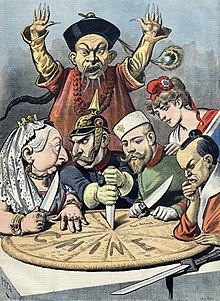Sino-British Treaty for the Relinquishment of Extra-Territorial Rights in China
This was done as a conciliatory step towards the Chinese government in order to boost up its cooperation with the Allied Powers in the Second World War.On 18 July 1940, British Prime Minister Winston Churchill declared in parliament his government's intention of relinquishing extra-territorial rights in China once peace was concluded.The Chinese side first indicated its desire to abolish extraterritoriality in August 1942, in a conversation between Wang Beng-shen, advisor to Chiang Kai-shek on Japanese affairs, and member of the British embassy in Chongqing.The wording of the treaty was similar to the proposal made by Hull on 27 August 1942, as it remained brief in order to allow for more detailed agreement once the war was over.The two sides signed the treaty, with the Republic of China writing a formal letter to the United Kingdom and securing the right to raise the issue of Hong Kong on a later occasion.
Traditional ChineseSimplified ChineseStandard MandarinHanyu PinyinWade–GilesWellington KooHorace James SeymourT. V. SoongHugh Edward RichardsonWu Guozhenbilateral treatyBritishChinese governmentChongqingAllied PowersSecond World Wara similar treatyRatificationsLeague of Nations Treaty SeriesUnequal treatyBritainGermanyRussiaFranceTreaty of Nanjingextra-territorial rightsBritish Supreme Court for China and JapanWinston Churchillextra-territorialjurisdictionCordell HullChiang Kai-shekBritish EmpireBoxer protocolLegations QuarterBeijingJapaneseoccupationHong Kong–Taiwan relationsHong Kong QuestionWayback Machine
